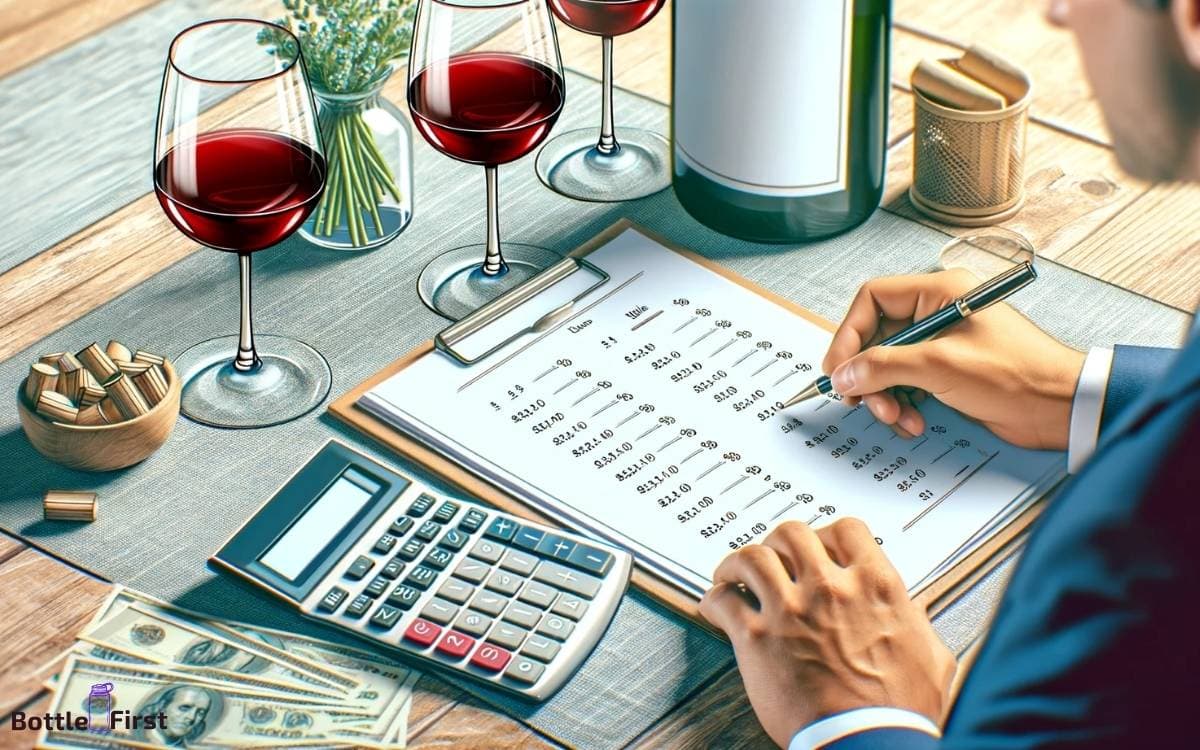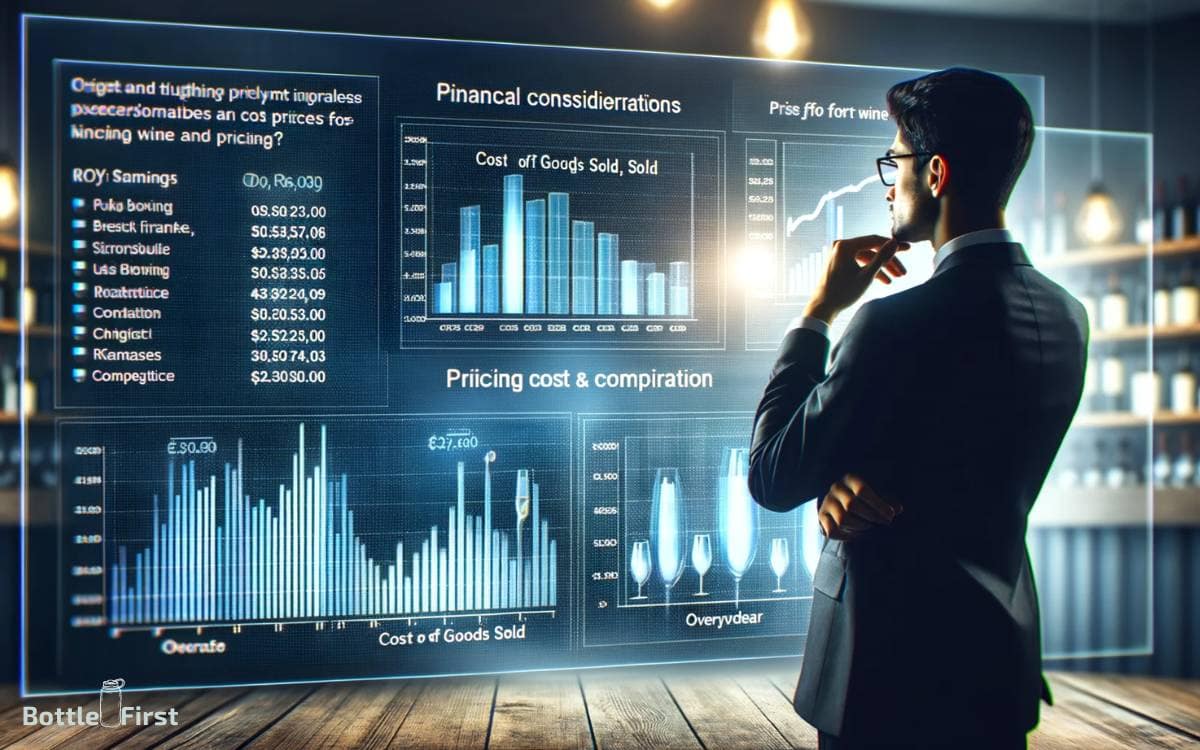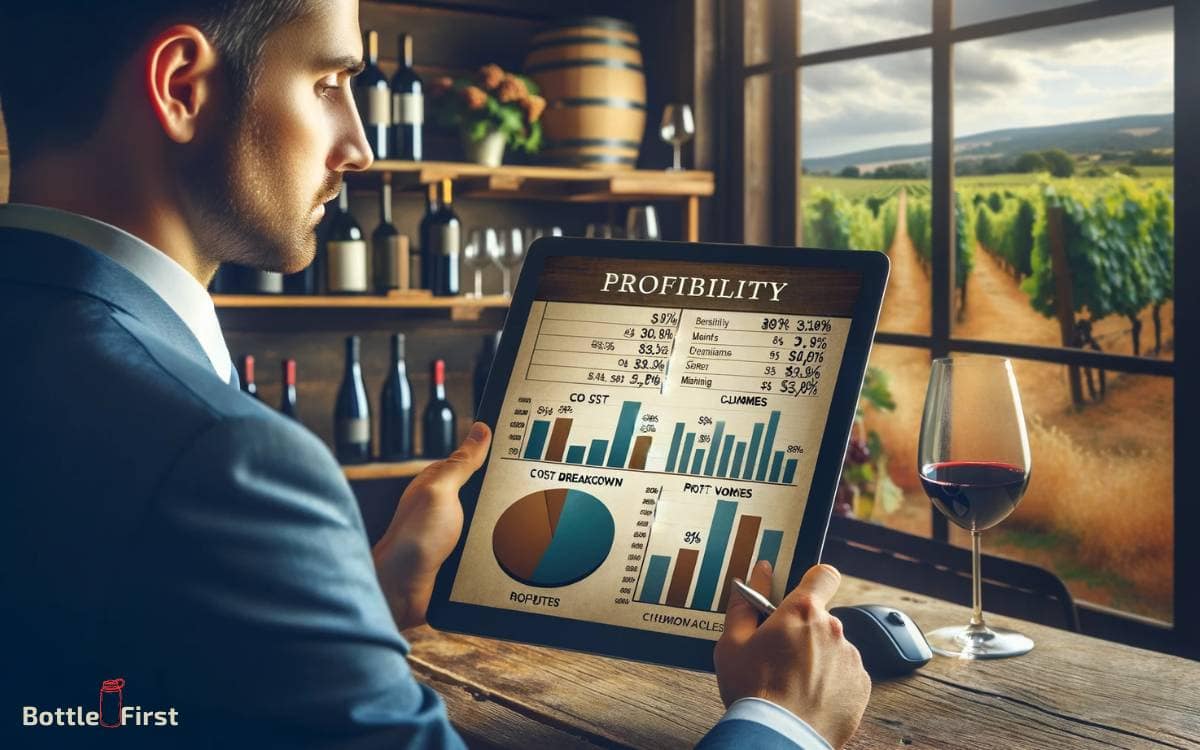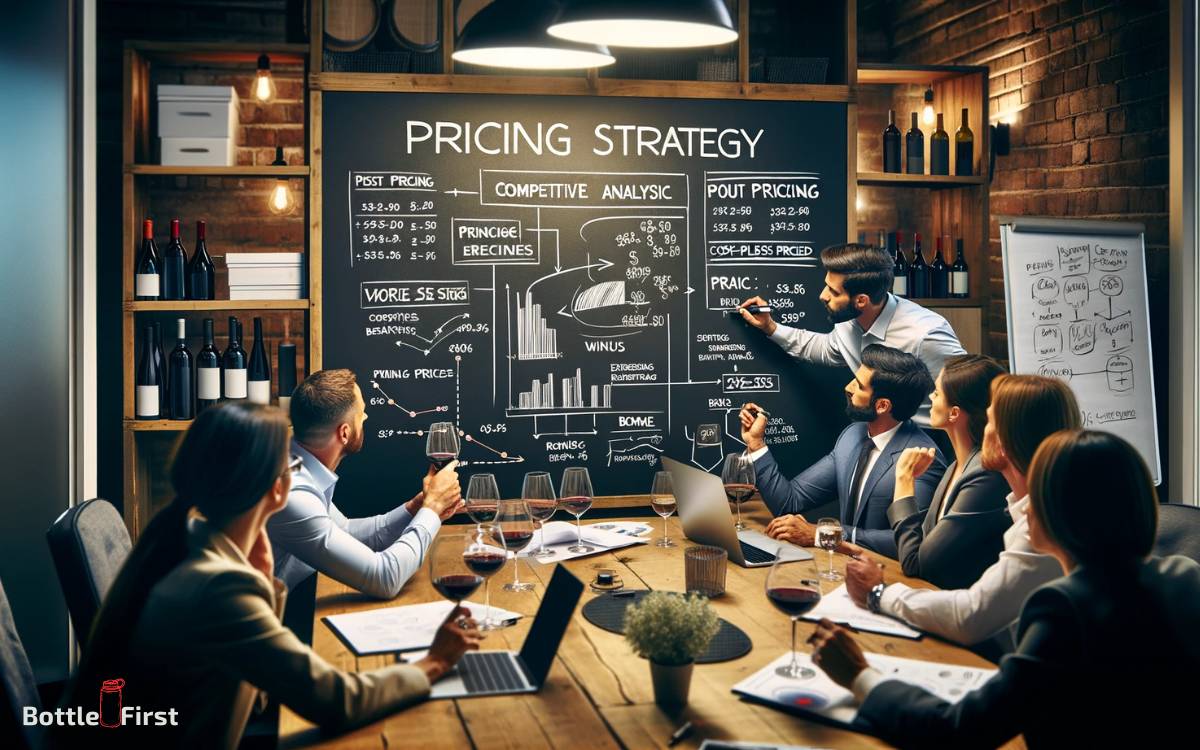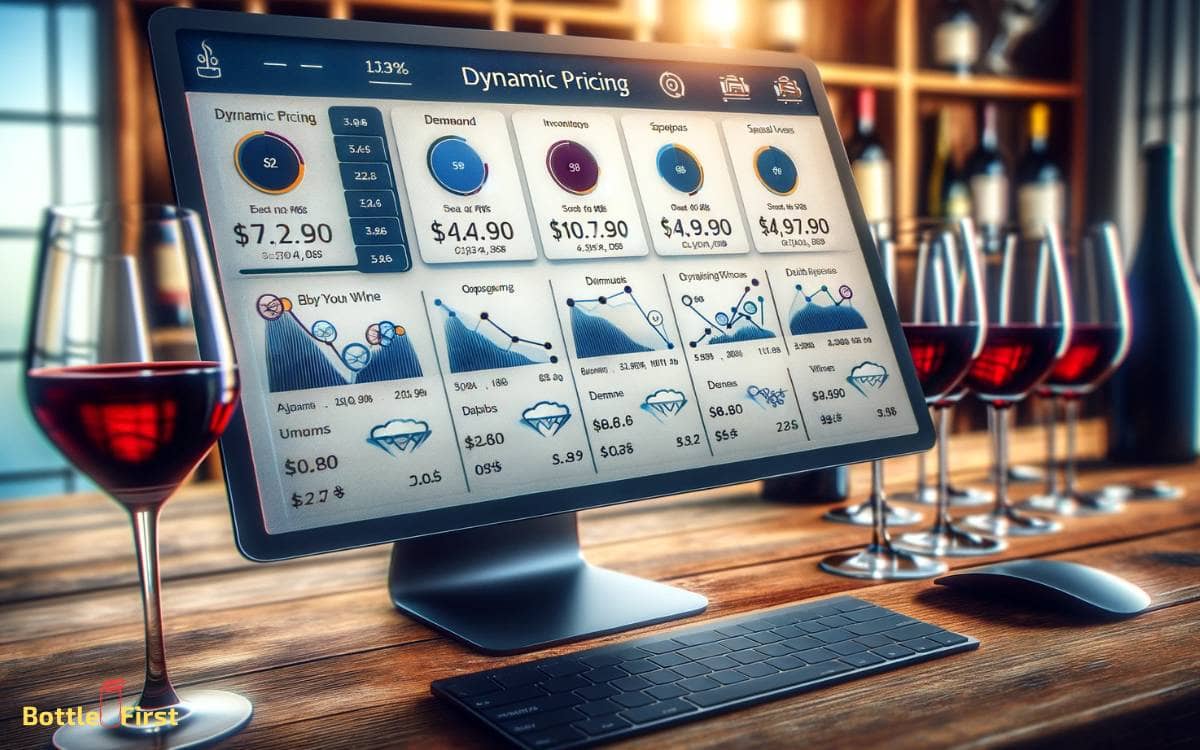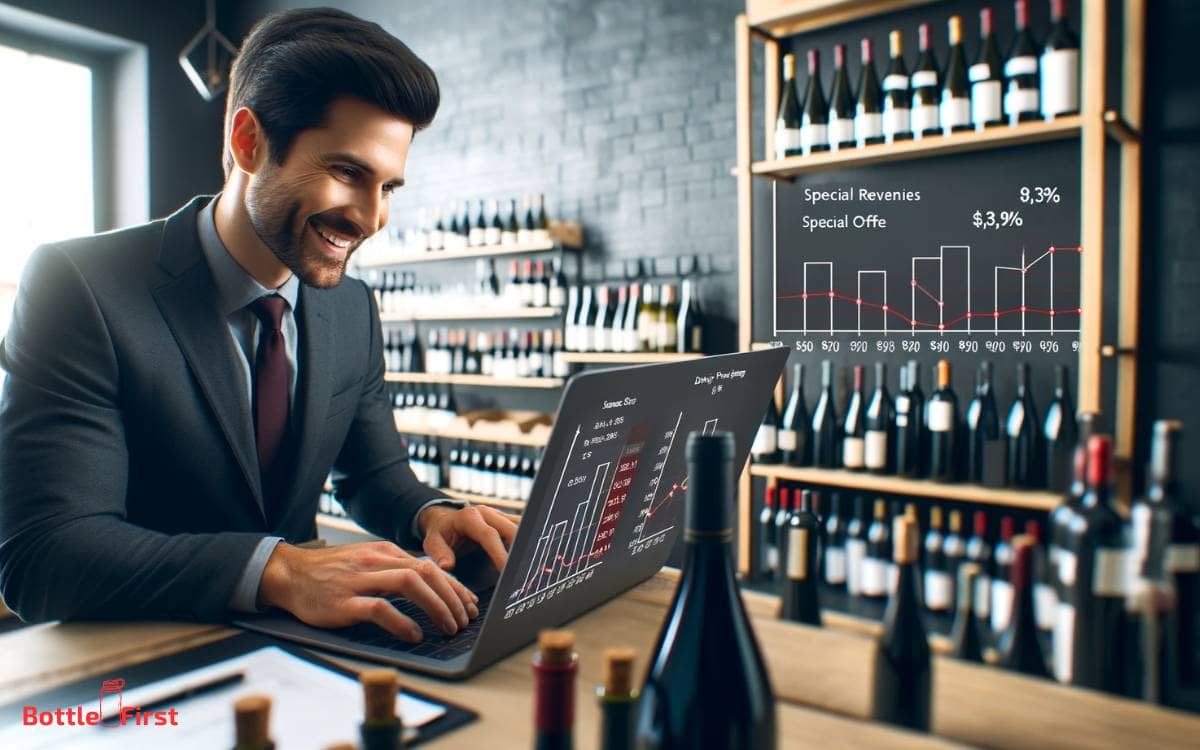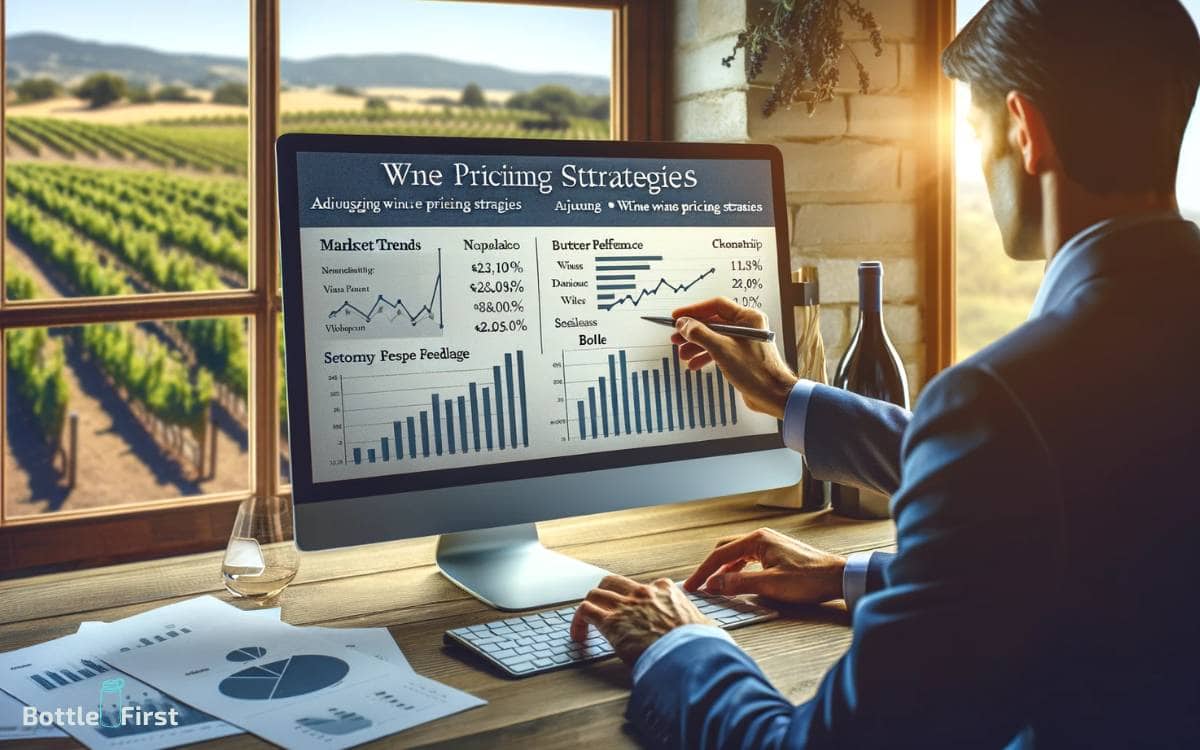How to Price Wine by the Glass and Bottle? 7 Easy Steps!
To effectively price wine by the glass and bottle, it’s essential to consider various factors such as the wholesale cost of the wine, the target profit margin, market demand, and competition pricing.
Typically, the price for a glass of wine should be set at about the wholesale cost of the whole bottle, ensuring that the sale of a single glass covers the bottle’s expense.
Bottles are often priced at a markup of 200-300% above wholesale cost to maintain profitability while being appealing to customers.
Additionally, using tiered pricing can cater to different customer segments and maximize overall sales.
When pricing wine, the following considerations should be taken into account:
For example, if the wholesale cost of a bottle is $10, the glass could be priced at $10 while the bottle could be priced at $30-$40.
Craft a wine pricing strategy that delivers both value to your customers and robust profit margins for your business.
Unlock the secrets of effectively pricing wine by the glass and bottle by considering cost inputs, customer tastes, and marketplace dynamics.
Implement a strategy that ensures the sale of a single glass covers the bottle’s wholesale cost, and target a bottle markup between 200% to 300%.
Embrace tiered pricing to serve various customer segments, enhancing sales and profit margins. Stay competitive and adaptable in your pricing to lead the market.
Key Takeaway
Step 1: Understanding Cost Considerations
When pricing wine by the glass and bottle, you should carefully consider the cost of the wine to ensure profitability.
This involves not only the cost of the wine itself, but also other associated expenses such as packaging, storage, and serving.
It’s important to factor in the overhead costs, including staff wages, utilities, and glassware, as these contribute to the overall cost of serving wine.
Additionally, understanding the impact of waste, breakage, and spoilage on the cost of each serving is crucial for an accurate pricing strategy.
By analyzing these cost considerations meticulously, you can determine the optimal pricing structure that ensures profitability while maintaining a competitive edge in the market.
This approach allows for innovative pricing strategies that align with the evolving preferences of wine consumers.
Step 2: Identifying Customer Preferences
As you identify customer preferences, consider which wine offerings best align with their tastes and preferences to enhance their overall dining experience.
Understanding your customers’ preferences is crucial for offering a wine selection that resonates with them.
To achieve this, consider the following:
- Craft a diverse wine list to cater to varying palates and preferences.
- Offer wine flights to encourage exploration and experimentation.
- Provide detailed descriptions to help customers make informed choices.
- Seek feedback and adapt your offerings to reflect changing preferences.
By understanding and catering to your customers’ preferences, you can elevate their dining experience and build loyalty.
This approach not only enhances customer satisfaction but also contributes to the overall success of your wine program.
Step 3: Analyzing Profitability Factors
Now, let’s analyze the profitability factors that will impact your wine pricing strategy.
First, we’ll examine the relationship between cost and pricing to ensure a healthy profit margin. Then, we’ll consider the impact of sales volume on your overall profitability.
Cost and Pricing
To analyze the profitability factors of pricing wine, calculate the total cost of the wine, including the cost of goods sold, overhead, and any additional expenses.
Once you have the total cost, consider the following factors to ensure optimal pricing:
- Market Demand: Assess the demand for the specific wine to determine the optimal pricing strategy.
- Competitor Pricing: Research and analyze the pricing strategies of competitors to position your pricing effectively.
- Profit Margin: Determine the desired profit margin for each bottle or glass to ensure profitability.
- Waste and Spoilage: Account for potential waste and spoilage when pricing to avoid losses.
Sales Volume Impact
Consider sales volume as a critical factor in analyzing the profitability of pricing wine by the glass and bottle. Sales volume directly impacts your overall revenue and profitability.
When setting prices, it’s crucial to analyze the potential sales volume for each wine option. High-volume wines may allow for a lower profit margin per unit but can significantly contribute to overall revenue.
On the other hand, low-volume wines may require a higher profit margin to compensate for the lower sales.
By understanding the impact of sales volume on profitability, you can make informed pricing decisions that maximize revenue.
Leveraging sales data and customer preferences can help identify opportunities to promote higher-margin wines or adjust pricing strategies to boost overall sales volume, ultimately driving profitability.
Regularly monitoring and adjusting pricing based on sales volume analysis is crucial for sustained success in the wine business.
Competitive Pricing Analysis
When analyzing profitability factors for competitive pricing, assess the pricing strategies of your competitors to identify opportunities for maximizing revenue.
Look for these key factors:
- Pricing Structure: Examine how your competitors are structuring their pricing for different wines and bottle sizes.
- Promotions and Discounts: Analyze the types of promotions and discounts your competitors are offering and how they impact overall profitability.
- Value-Added Services: Consider any value-added services or experiences that your competitors are providing alongside their wine offerings.
- Customer Segmentation: Understand how your competitors are targeting different customer segments and adjusting their pricing strategies accordingly.
Step 4: Developing Pricing Strategies
When developing pricing strategies for wine, it’s crucial to consider the difference between pricing by the glass and by the bottle.
By understanding the factors that drive consumer preferences and profitability, you can maximize profit margins and make informed pricing decisions.
This involves carefully assessing the cost of goods, market demand, and pricing psychology to set competitive and profitable prices.
Glass Vs. Bottle Pricing
To maximize profitability, prioritize developing clear and effective pricing strategies for wine by the glass and bottle. When it comes to pricing wine, it’s crucial to consider the nuances of glass versus bottle pricing.
Here are key points to consider in developing your pricing strategies:
- Customer Perception: Understand how customers perceive the value of purchasing wine by the glass versus by the bottle. Consider factors such as convenience, variety, and perceived value.
- Profit Margin Analysis: Conduct a thorough analysis of the profit margins for wine sold by the glass and by the bottle. This will help you set prices that maximize profitability while remaining competitive.
- Waste and Spoilage Considerations: Take into account potential waste and spoilage when pricing wine by the glass, as these factors can significantly impact your bottom line.
- Promotional and Upselling Opportunities: Explore how glass and bottle pricing can be leveraged for upselling and promotional strategies to increase overall sales and customer satisfaction.
Maximizing Profit Margins
Considering customer perception and profit margin analysis, you can develop pricing strategies that maximize your profitability for wine sold by the glass and by the bottle.
To achieve this, it’s crucial to understand the psychology of pricing. Utilize strategies such as anchor pricing, decoy pricing, and tiered pricing to guide customer choices towards options that optimize your profit margins.
Employing dynamic pricing, based on factors like demand, time of day, or customer preferences, can also enhance profitability.
Additionally, leveraging data analytics and customer purchasing patterns can inform strategic pricing decisions.
By implementing these innovative pricing strategies, you can improve overall profitability while maintaining customer satisfaction and perceived value.
Step 5: Implementing Dynamic Pricing Tactics
By adjusting your wine prices dynamically, you can respond to changes in demand and maximize your revenue potential.
Implementing dynamic pricing tactics allows you to stay competitive and capture the full value of your wine offerings.
Here are some innovative strategies to consider:
- Utilize data analytics to identify pricing trends and customer preferences
- Offer limited-time promotions to drive sales and create a sense of urgency
- Adjust prices based on seasonal demand and market fluctuations
- Implement a dynamic pricing software to automate the process and optimize profitability
Dynamic pricing enables you to align your wine prices with consumer behavior, ultimately increasing your overall profitability.
Stay ahead of the competition by embracing these cutting-edge tactics to set your business apart in the dynamic world of wine sales.
Step 6: Maximizing Sales and Margins
Maximize sales and margins by leveraging dynamic pricing tactics to align your wine prices with consumer behavior and market trends. By implementing strategic pricing strategies, you can optimize profitability and drive sales.
Consider utilizing the following tactics to maximize your wine sales:
| Pricing Tactic | Description | Benefits |
|---|---|---|
| Happy Hour Specials | Offering discounted prices during off-peak hours to attract more customers. | Increase foot traffic and sales volume. |
| Bundle Deals | Creating packages that combine wine with food items or other beverages for a set price. | Encourage larger purchases and upselling. |
| Limited Time Offers | Introducing temporary price reductions or exclusive deals to create a sense of urgency. | Drive impulse purchases and customer loyalty. |
Step 7: Monitoring and Adjusting Strategies
To effectively monitor and adjust your pricing strategies, there are several key steps you should take:
- Analyze sales data: By carefully examining your sales data, you can identify trends and customer preferences. This enables you to make informed pricing decisions that maximize profitability.
- Utilize advanced analytics tools: To gain deeper insights into customer behavior and purchasing patterns, it’s important to use advanced analytics tools. These tools can help you uncover valuable information that can inform your pricing strategies.
- Implement dynamic pricing models: Dynamic pricing models are essential for adjusting prices based on demand and market conditions. By implementing these models, you can ensure competitive pricing while maximizing revenue.
- Leverage customer feedback and reviews: Customer feedback and reviews can provide valuable insights into perceptions of value. By listening to your customers and adjusting your pricing accordingly, you can better meet their needs and expectations.
- Stay updated with industry trends and competitor pricing strategies: It’s crucial to stay informed about industry trends and competitor pricing strategies. This knowledge allows you to remain agile and responsive in your pricing approach, ensuring that you stay competitive in the market.
Conclusion
Pricing wine by the glass and bottle requires careful consideration of cost, customer preferences, and profitability factors.
By implementing dynamic pricing tactics and monitoring sales and margins, you can maximize revenue and appeal to a wider range of customers.
Remember, finding the right pricing strategy is like finding the perfect blend of flavors – it takes time, precision, and a keen understanding of your audience’s palate.
Cheers to finding the perfect price point for your wine offerings!
